|
We are at the half way point of our 200 hour Vinyasa Teacher Training immersion in Portugal. We are fortunate to be in this educational and personal growth bubble for three long weeks. Under the olive tree, soaking up the sun, we asked everyone to share one of their insights so far. Ten days with 2 hour morning practices and long hours loaded with lectures, discussions and workshops covering everything from the Yoga Sûtra and Human Anatomy to teaching sun salutations and learning hands-on assists. Here is what some of our trainees shared. I have learned the value of routines. It's good for me. I feel safe and accepted just being who I am. I've discovered how much I love sequencing and even drawing stick figures. I've learned that a challenging pose can be a positive thing. It hasn't always been like that for me. I have learned to enjoy the process. I have realised the power of intention setting. In our yoga teacher trainings, on the very first day, we ask our students this question. What makes a great yoga teacher? Not a good yoga teacher. Great. It's always a fantastic discussion. We end up with a long list of qualities that a great yoga teacher should have and quickly realise we may or may not have the time to develop them in the 200 hours ahead. But as hard as it is to sequence a class, separate left from right, and communicate the depth of yoga to a room full of people, even when all this is in place a yoga teacher can still be, well just good. This discussion is important. How do we go from good to great? Do all great yoga teachers fill the room in the big cities? And, if a yoga teacher is popular and has a huge following, does that mean she must be great? Does a yoga teacher in a big high profile studio teach at a higher level than one in a small town space with 8 students? Think about it. Who is a memorable yoga teacher you have come across? One that you were willing to change your own schedule for. One whose class you cancelled when you heard there would be a substitute teacher. What did she have that the others didn't have? What we have found is that great yoga teachers don't always come in the format of sold out high profile events. The primary quality of a truly great yoga teacher we believe is presence. The ability to truly connect. To work in a dialogue with the students, to see them, to be there in every cell and breath. Keep your eyes open – you can come across a great teacher anywhere at anytime. In this the year of the mighty Covid-19, the connection of course is challenged. That dialogue with students is always compromised when teaching online. Not to mention when training teachers online. For a brief moment there, we were tempted to move our training to an online format. It seemed like the only way. But it never felt right by our trainees and everything we worked for and stand for. We are so very grateful to our trainees this year, who have stayed with us and moved their dates forward. With your support and trust, we've been able to stay with our original concept: in-person immersion vinyasa teacher trainings with, you guessed it, human presence and connection for three long weeks. We managed to pull off an in-person training with 12 beautiful souls in Sweden in September. At the time of writing this, we are looking forward to our up-coming sold-out training in Portugal November 2–22, 2020. Just a quick note to share a couple of playlists designed for a sweaty, juicy vinyasa flow practice! You'll get some drum beats and rhythm to encourage students to flow, pulse and shift, even when holding a pose. Enjoy!
90 Minute Vinyasa Playlist ›› 80 Minute Vinyasa Playlist ›› This is the spring when yoga teachers' flexibility has been put to the test. Not mobility, that would have been easy for us. No, we're talking about our ability to adapt to not being allowed to teach as we are used to. We have started teaching online classes live. We have created classes with voiceover. We are recording classes with no visuals at all. As yoga studios now start to open again, we are not to do any physical assists. There is a silver lining to all these challenges. You have an amazing opportunity as a yoga teacher to work on your clarity and your verbal cues. Here are our top tips on teaching vinyasa flow with clarity:
As yoga teachers, we give it all. Our students look at us to guide them through an experience, and they come to our classes because we – or at least the practice we represent – keep them balanced. So how do we stay strong in our lives and our delivery? How do we evolve, just as our students do? Here are our 5 tips on how to stay inspired as a yoga teacher.
1. Keep taking public classes. It's easy to get caught up in the idea that you used to be a student and now you're a teacher, and your days in public classes are over. Not the case. You're still a student. You'll always be a student. Go take a class with a colleague. You can always pick up a little inspiration from other teachers' classes. 2. Establish and stay with your home practice. Each class planning moment is an opportunity for self practice. Sort of. But also, make space and time for practice just to practice. Don't forget what brought you to yoga to begin with. Keep exploring and re-discovering the joy of simply practicing yoga. 3. Take time off teaching. Allow yourself to take a break every now and then. Depending on your situation, it might be a month or just a week or even a few days. Give yourself enough time off so that you miss teaching. 4. Learn something new. It's highly valuable to expand your horizons and learn something totally new. Cooking classes, a language, ballet dancing, whatever really. You'll get to be a beginner, and in the process you'll learn to understand your beginner students better. 5. Evolve professionally. Keep learning about yoga philosophy, pedagogics, anatomy, leadership, business and marketing. Keep expanding yourself and keep offering your students more. Take an advanced teacher training, a shorter retreat for teachers or learn skills online. Great news: Almost all of the above will be included in our 40 hour Teacher Immersion, focused on the Art of Sequencing and Theming Vinyasa. The course will naturally flow into branding and business, making sure that you stay true to who you really are as you evolve as a vinyasa teacher. Get ready to practice vinyasa flow with other teachers like you while expanding your network, learning to work even more professionally and at the same time enjoying the countryside of southern Sweden at the most magical light filled time of year. Happens June 1–5, 2020. Read more and book here ›› For many practitioners of vinyasa, music is a big part of class. It can really enhance the experience in body and mind when the tunes are just right in intensity and rhythm. This also works the other way – music can impact a class in a negative way and take away the beauty of a class and a teacher. As a vinyasa flow teacher, a good playlist that has that ability to enhance the experience for your students can make all the difference in your confidence and how well you connect with your students. So how do you create the perfect yoga playlist for vinyasa flow? While this is easy for some yoga teachers, it's a big challenge for others. Here are 9 things to consider.
1. Follow the rainbow A typical vinyasa class will have an intensity arch like a rainbow. The class will have a beginning, a middle and an end. It will to some degree go from mellow to more intense and back to mellow. Your playlist should follow the arch of your class. Are you starting supine or seated? Do you have a clear peak of your class? Is the pace slow and juicy or high energy? You should have an idea of what class you will teach before you create a playlist. 2. Don't be lazy You will probably find other teachers' playlists on Spotify or get a link to a colleague's playlist that you experienced and loved while in a class. But chances are it will not work as well in your own class as it did in theirs. Simply because of point number 1 above. There is nothing wrong with finding inspiration from others, but the trick is to use a borrowed playlist as a starting point and adjust it (take away, add) to suit your own class. Make it yours. It also feels much better than borrowing. 3. Make yourself smile To create a general playlist for vinyasa flow, and as a good starting point if you are new to creating playlists, simply start with yourself. What music puts a smile on your face? Build a playlist like an arch, as discussed above. Start with 2–4 softer tunes. In the middle you add 4–6 songs of the kind that you like in the more intense part of a class. Finish with 2–4 soft pieces. If you play music you like, you may not please everyone (you never can) but at least you will feel confident, positive and be true to yourself. 4. Test-drive it The only real way of finding out if a playlist works or not is to try it out. Try it on yourself first, rather than in a classroom setting. Quite often we find that a song that seemed like a really good idea for yoga, turned out to be irritating/depressing/choppy/distracting on the mat. 5. Silence is golden Make your playlist about 5–10 minutes shorter than the length of your class. At the beginning of class while your students are landing, it's quite nice with no music at all. During final rest it can be very effective with silence, as a way of letting go of all effort and senses. It can also be effective with a well chosen piece of music. Make sure your choice is well thought through and has meaning if you choose to play a song in savasana. People will really hear it. 6. Make a sloppy list Once you start making multiple playlists you have to become efficient. Create a sloppy playlist that simply has all good songs for yoga that you come across. This is where you pick from when creating your tailored class lists. 7. Make an allround soft list When you teach a group of beginners, a corporate group, or if you jump in to sub another teacher's class you may not want too much identity in your playlist. Create a soft playlist that keeps a low profile for these occasions. Classical piano music can be quite nice, for example. 8. Be aware Lyrics can be distracting for your students, who are trying to hear your instructions throughout the class. Music with lyrics may become competition for attention, and ultimately challenge your presence in the room. Popular music – music that people know from the radio or the past – can have a similar effect, i.e. taking attention away from your teaching. Popular music will also trigger associations, memories and emotions to a higher degree than less known music, and of course this is entirely beyond your control. 9. Volume control Just in the same way it's nice to be aware of dimming lights up or down throughout a yoga class, working with the volume can enhance the experience. A lower volume in the beginning, higher in the intense middle part and again lower towards the end when your student's senses are open and in a way sensitive, is generally a good idea. Can you be good at yoga? Well, for the sake of this little article, let's say yes. Good at yoga as in displaying a strong and graceful vinyasa yoga practice with equal parts effort and ease. Keeping a steady rhythm linked with each breath in and out.
This takes time to establish, years and years of practice. Even more hard work, more determination and more time might lead to a visually impressive practice with handstand press-ups and fluid transitions into koundinyasanas, vashistasanas and eka padas. We are easily impressed by people with a strong yoga practice. It’s inspiring! It looks great in social media! But does a strong acrobatic practice automatically make you a good yoga teacher? And, turning the question around, does a yoga teacher have to possess that acrobatic advanced practice in order to be good at teaching yoga? To teach yoga well, you need to know the subject you are teaching. You need to know yoga. Positions, transitions, activations, techniques. You need to know what everything tastes like. What does it taste like to shift the body weight into the hands? What does it taste like to raise a leg slowly? If you have done part of the journey towards handstand, if you have tasted it, you can certainly teach it well without mastering it. A good teacher is skilled pedagogically. A good teacher has clarity. The ability to simplify. Humbleness. Empathy. Kindness. Logical thinking. An interest in people. A good teacher sees people and meets each individual where he/she is. Advanced asana is not what changes people. It's not the great gift of yoga. If you want to make a difference and spread the practice to even more people, then focus on tasting all aspects of yoga and fine-tuning your actual teaching skills. Spread the simplicity of breathing, moving, building strength, creating body awareness. The gift is right there, in the simplicity. Be of service, and spread exactly this when you teach. True North Vinyasa offers 200 hour foundational vinyasa teacher trainings in Portugal twice a year. Read more here ›› Ps. In the picture above, our guest teacher Nazareno Grisola, who is good at yoga and good at teaching yoga. It's possible! It’s a jungle out there. So much to choose from, right? The world of yoga teacher trainings is an unregulated one, meaning you have to do a lot of your own homework and research, and ultimately trust your own intuition and knowledge.
At True North Vinyasa, we offer 3 week intensive foundational vinyasa teacher trainings on the 200 hour level, that are certified with Yoga Alliance. Our focus from the beginning has been to not just crank out more yoga teachers, but to educate strong, sustainable and free thinking yoga leaders who can actually make a difference – and make a living. Our goal is that each trainee should leave feeling ready to plan classes and start teaching, and with a pretty good idea of who to teach and also an idea of his or her individual style as a teacher. We spend a lot of time on teaching labs and sequencing workshops, but also incorporate business, branding and marketing (something we are specialised in). In conclusion, we are specialised in our field, and we designed a yoga teacher training based on certain core beliefs. That means our training is not for everyone. But it’s the best yoga teacher training for the right person. So, how do you find the perfect yoga teacher training for you? Define what you are after. Read the fine print. Take the teacher’s class. If that’s not possible, ask for a phone meeting, have a talk. Some general things to consider: - What is your purpose with a yoga teacher training? Is it to learn more about yoga, or to learn how to teach yoga? - What are you most interested in emphasising? Philosophy? Sequencing? Anatomy? Check the curriculum and talk to the facilitator of the program. - What style of yoga do you want to teach? What style of yoga do you want to practice a lot? Check the description, talk to the facilitator. - For a more objective perspective, ask for a reference from previous trainings, and talk to a person who has graduated from the programme. - If you are considering an intensive all inclusive programme, quality of food and venue becomes quite important. Inquire about it. The full description of our next 200 hour teacher training (November 2019) is here › In the True North Vinyasa Teacher Trainings, we emphasise the value of having a home practice in yoga. Most trainees we meet don’t. They love vinyasa, and they know this is what they want to share with others. But most haven’t explored their own practice from within yet. One week into our intensive format yoga teacher training, we give trainees the task to plan and sequence a vinyasa class they would love to take. For most, this is an empowering experience. And we know, from working as yoga teachers for many years, that there is a strong long term value in creating a home practice as well. Why?
1. To explore movements and how they feel in your own body is the foundation of creative and logical vinyasa sequencing. 2. To have a base recipe for a home practice makes it that much easier to maintain discipline and stay with your own practice. 3. The base recipe for your home practice is a valuable template as you begin to plan classes. 5. That feeling of empowerment we see people experience the first time – it stays with you. Having a strong home practice means building confidence, in addition to continuously developing your practice and knowledge in ways you can express in your own words. PS. Our next 200 hour vinyasa teacher training takes place in the lush countryside of western Portugal, surrounded by green hills, in November 2019. Early bird runs until June 1st. Ok, so you received the certification and said goodbye to everyone at the yoga teacher training. Now what? How do you get started as a brand new yoga teacher? At True North Vinyasa, we spend quite a lot of time and effort the last week of training on branding and business. For example, we invite a professional photographer to take profile pictures so you can get started right away with a website and social media. If you are serious about wanting to teach yoga, we firmly believe that it's good to get going right away after graduation. The closer you are to that time you were eating, breathing and living yoga for weeks, the stronger you'll feel as you start off teaching "real students". To give an idea of how this can be done, we'd like to share two stories from our 2018 groups of trainees. This is Anna Rigner. She took our 200 hour vinyasa teacher training in April 2018. Eight months later she is teaching five classes a week at two different studios in her hometown Stockholm, Sweden. Immediately after returning home from the intensive training in Portugal, Anna spotted a post on social media about a project called Hej Främling (translates to Hello Stranger). The organisation offers free yoga as a way of networking for refugees, immigrants and Swedes. Anna contacted the organisation, got a meeting and was teaching the following week. – I was nervous but excited to start teaching for real. It was a very good environment for me. People showed up in jeans, some spoke no Swedish or English, and the whole arrangement was very unpretentious. Shortly after, she contacted a studio where a friend was teaching, offering her services. After a phone interview, Anna landed a four week substitute gig. She got lucky, they really needed her right away. After the four weeks, she was offered to take over the class, and one thing led to another. - It was actually easier than I thought to get going. I worked hard and said yes to everything, organised three events with other teachers and just sort of did it. My advice to other is to throw yourself out there before you start doubting yourself! In addition, she is involved with two other teachers from the April 2018 True North Vinyasa group. With Leslie in Maine, USA and Kit in Lisbon, Portugal, this trio is about to launch retreats under the name Simply Rewind later this year. You'll find Anna's classes at Studio Levels and World Class in Stockholm, and on her website at www.stannayoga.com Our thoughts on Anna's story: In the training, Anna stood out. She was a serious student, and took every chance to learn. She kept a low profile but we quickly realised she was making plans for the future. During the training she had a good idea of where she wanted to go with her new profession. Anna is soft spoken and humble, strong and bright. We always knew she would work her way into the yoga teacher's world. This is Emily Hayes. She took our 200 hour vinyasa teacher training intensive in November 2018. Two months later she's teaching 2 classes a week with fully booked classes in her hometown of Ennis, Montana. Emily signed up for the training early, half a year before starting. She knew when she signed up exactly what she wanted and why.
She was already well established as a massage therapist in her small town, which has a mixed crowd of locals and seasonal tourists, running her business out of a space where her friend offers yoga. Her friend's classes had been fully booked for years, and together they made a little plan to offer more yoga. Upon returning home, Emily offered a handful of free classes in December, with a recommended donation for the food bank. She did it as a way of spreading the word and get to practice teaching right away "without feeling pressured to make sure people got their money's worth". Her strategy, which was to get new people on the mat who didn't already have a practice, worked well. Her beginner's series filled up the same day she posted it on Facebook. – So far in class I’ve had metal workers, a distiller, ranchers, the high school shop teacher, a cowboy, retired folks, and hospital employees. Many of these folks had never stepped foot on a yoga mat before, much less joined a class. I’ve been blown away by the response to my new classes; it’s a good time to be a teacher as yoga is now mainstream enough that people have heard of it, and are willing to try it. It also helps that I’ve been in this community long enough to know a wide variety of people, but it’s still amazing to see them actually show up in class. In Emily's case, the small town where everyone knows everyone might have been key. New yogis might have been drawn to her because they knew her and trusted her. Even the fact that she was a new teacher might have worked in her favour. And teaching beginners, though a huge responsibility, can be a good way to sharpen your skills as a new yoga teacher. – The teaching gets a little easier every time but I still have butterflies in my stomach for that first minute. I always start class with some deep grounding breaths because it helps me too! Emily's career got started so fast she hasn't even gotten her own website together. For now, if you pass Ennis Montana, look her up via www.earthstarmontana.com Our thoughts on Emily's story: Emily is an excellent example of the old branding trick of having your WHY in place. Coming to Portugal, she already knew who she wanted to teach and why. She could've probably written a list of names of people she was targeting, because she lives in a small tight-knit community. During the training, she was able to tailor everything we brought up to benefit her idea of a beginner series of classes she called "can't touch your toes yoga". Emily was a super dedicated student and taught an amazing last final class. She's entirely herself, always. We had no doubt she'd get the metal workers to come to class. |
AuthorArticles about the world of teaching and living Vinyasa Flow Yoga by Elin Jensen and Lisa Andersson Rhodiner Categories
All
Archives
November 2023
Categories
All
|
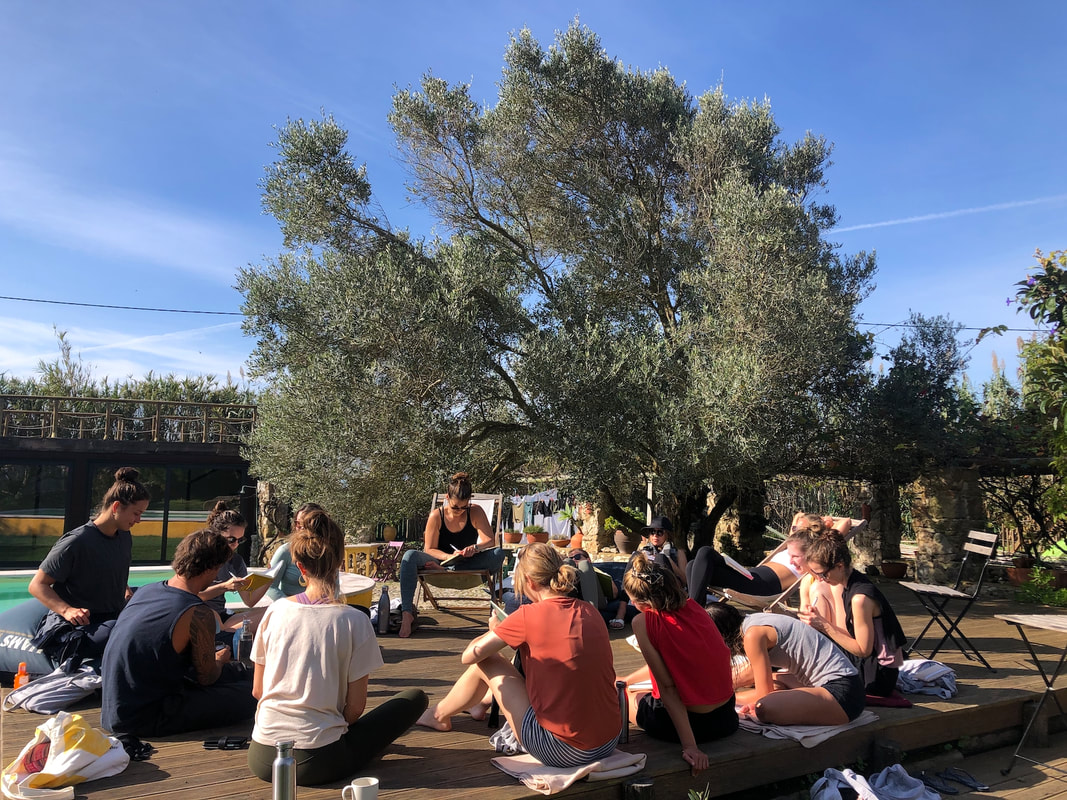
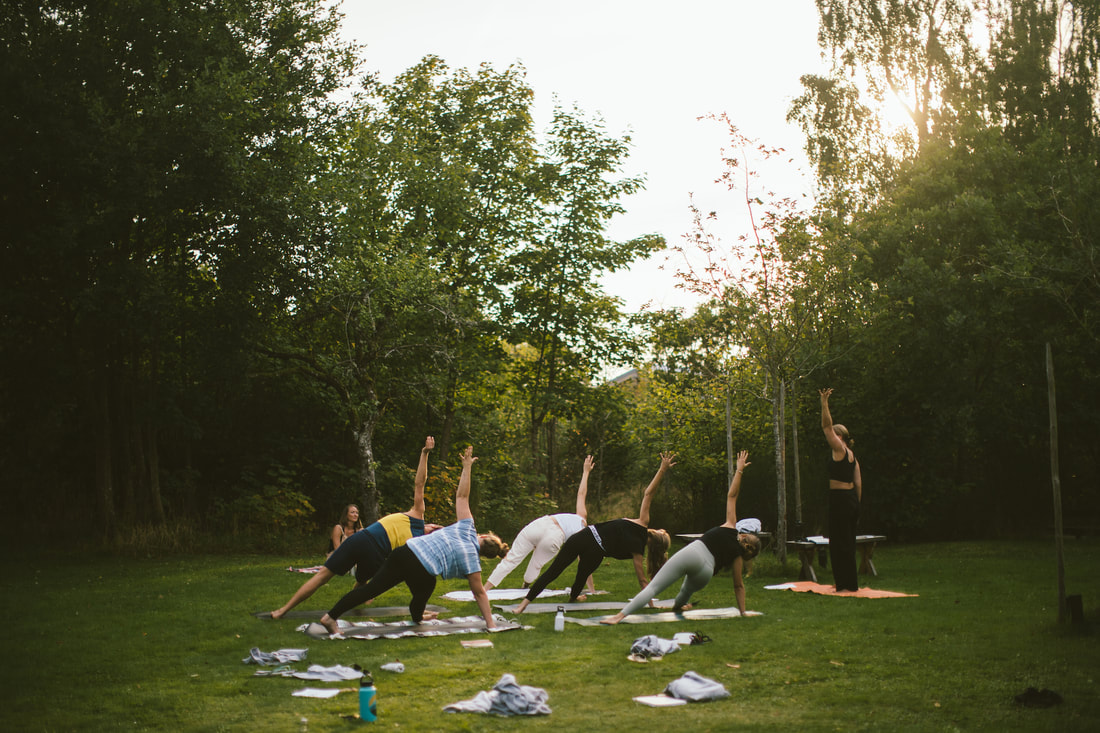

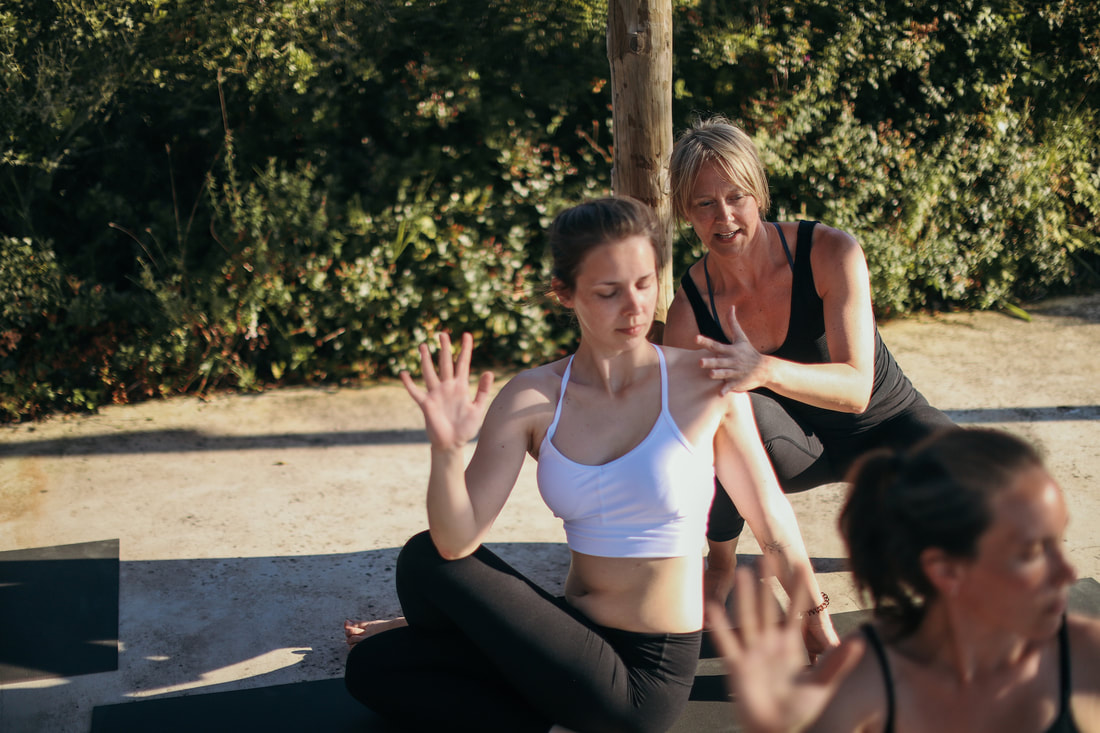
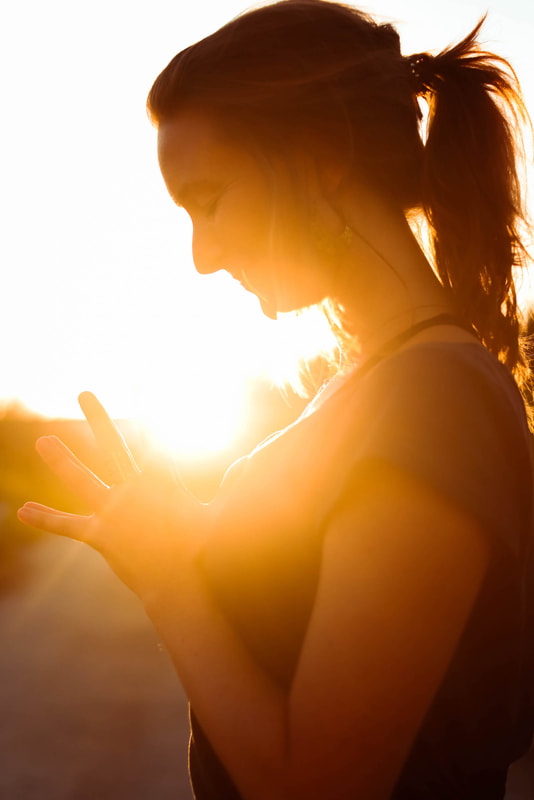
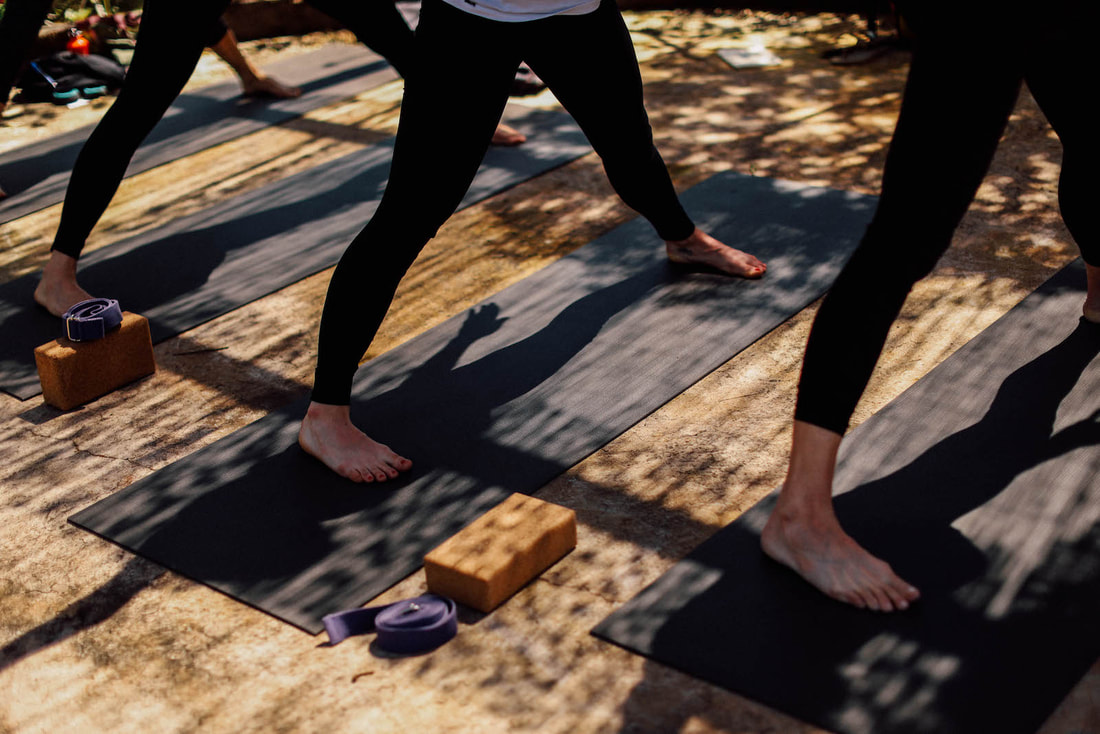
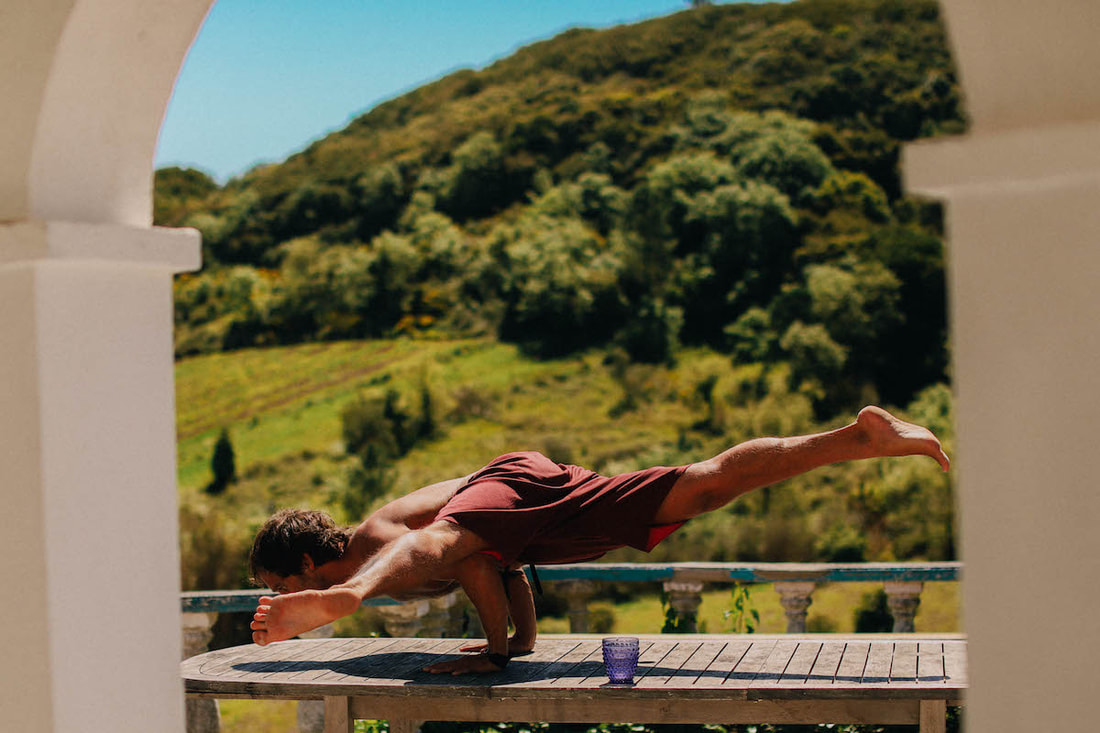
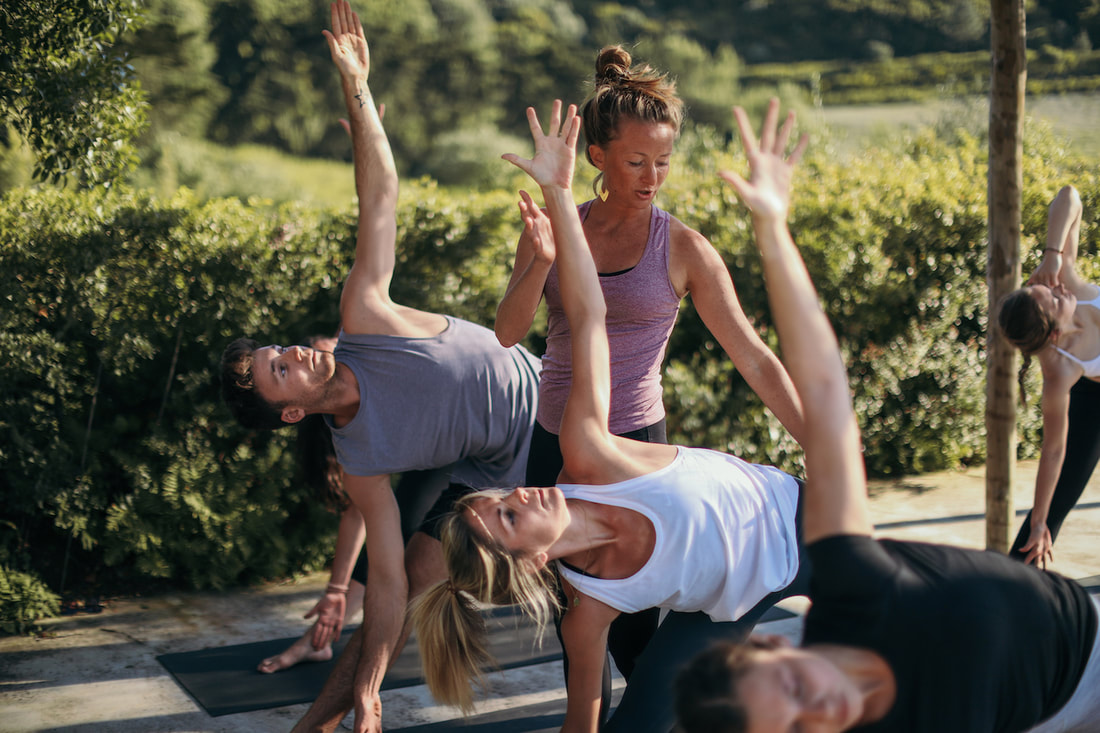
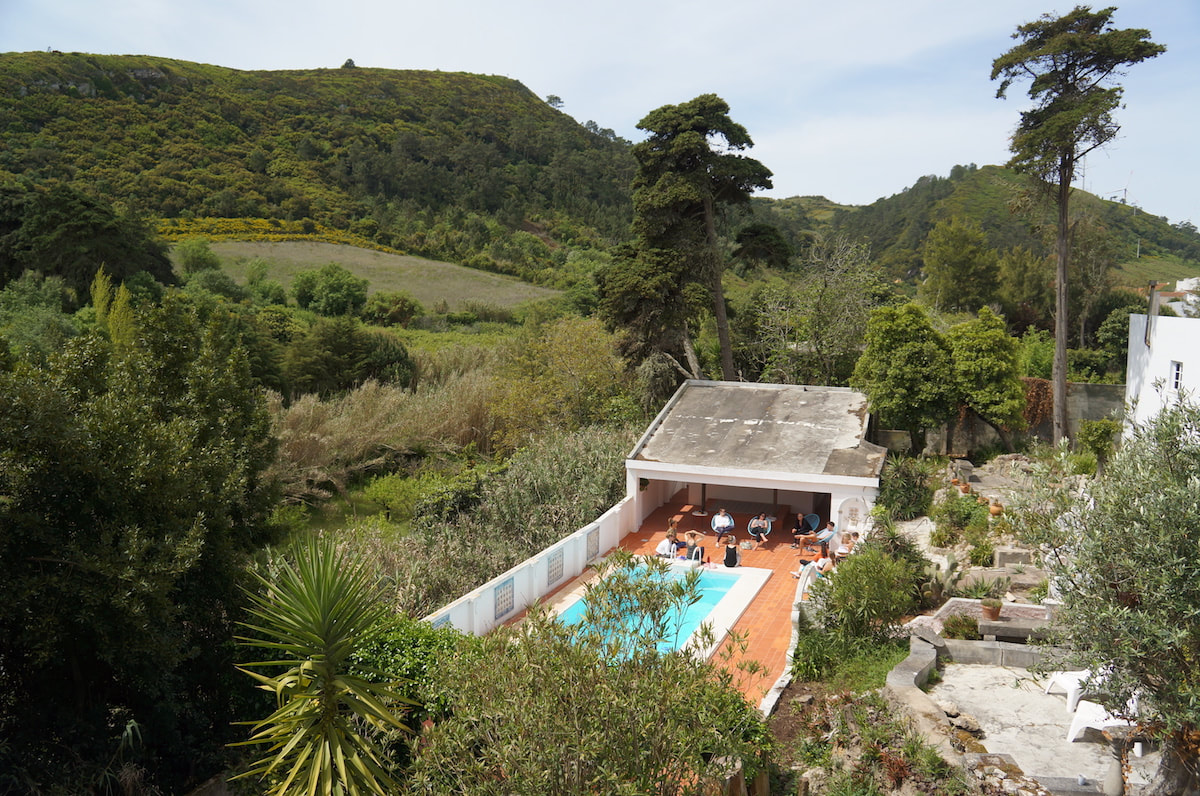
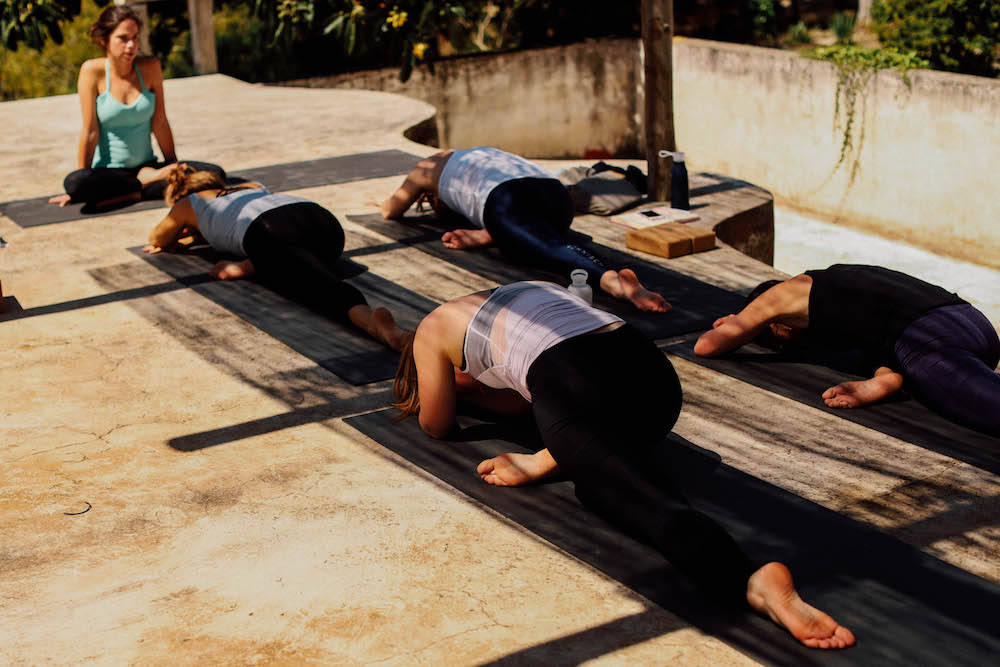
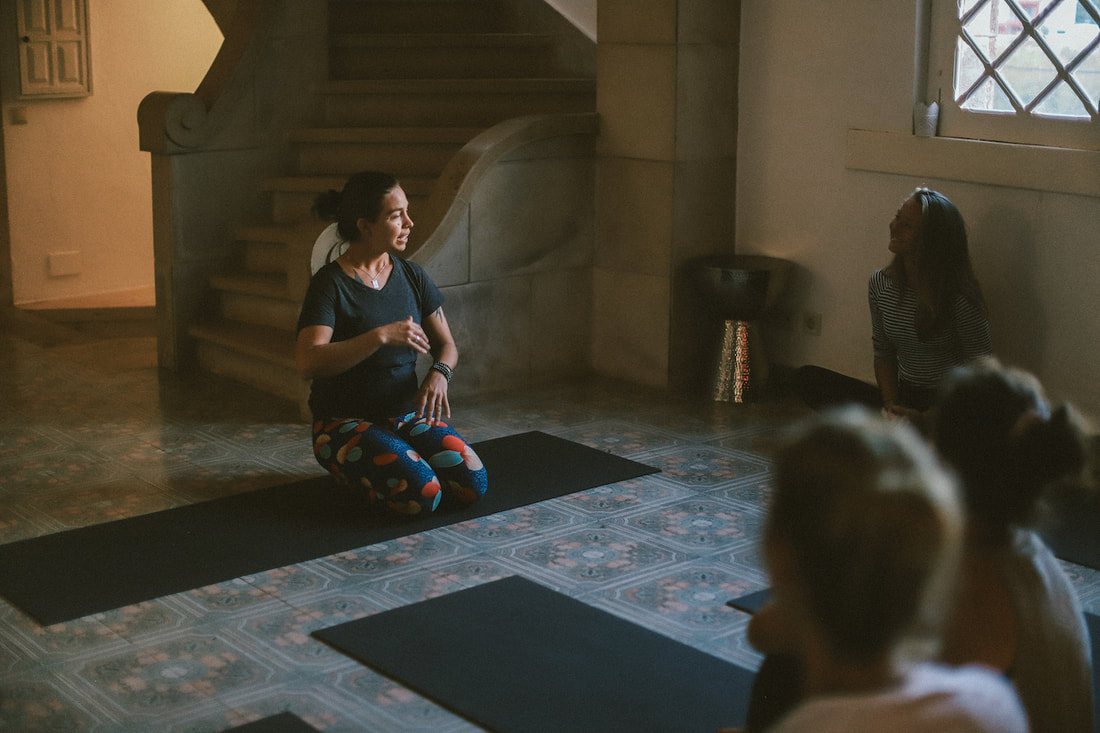
 RSS Feed
RSS Feed